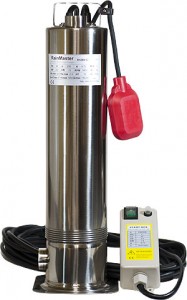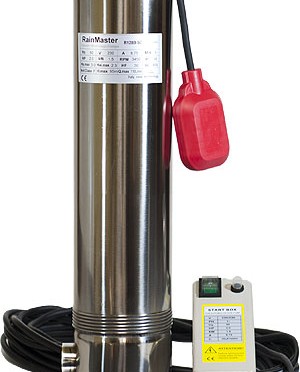 As mentioned in a previous post, centrifugal pumps are the most common type used in rainwater collection. Sizing of the pump is essential in finding the right pump to meet the needs for which the system was designed. A water cooled centrifugal pump is recommended for potable application. Friction, static head, lift,PSI, and GPM are factors that need to be considered in sizing your pump. Pumps are either submersible or external, and depending on the application, one could be better suited than the other.
As mentioned in a previous post, centrifugal pumps are the most common type used in rainwater collection. Sizing of the pump is essential in finding the right pump to meet the needs for which the system was designed. A water cooled centrifugal pump is recommended for potable application. Friction, static head, lift,PSI, and GPM are factors that need to be considered in sizing your pump. Pumps are either submersible or external, and depending on the application, one could be better suited than the other.
Sump tanks are generally smaller than the cistern and their purpose is to convey water collected from the roof to a central collection tank, then pumped to storage. A submersible pump with a float switch is best suited for this application. As the sump tank becomes full of collected water from the down spouts, the float switch turns the pump on to transfer water to storage. When the water level in the sump drops the float switch to the down position, the pump turns off. Submersible pumps for this application “MUST” be water cooled. The use of an oil cooled submersible pump is not considered NSF for potable use. The water cooled, submersible centrifugal pump needs to lift to the top of the cistern, whether the plumbing is external or internal. A larger pump will be required if the pump is not able to meet the lift requirements. Unlike external centrifugal pumps, which need to be primed and maintain that prime during and after pump cycle, submersible pumps, if completely submerged, will maintain a constant prime for operation.
Submersible pumps can be 120 or 220 volt and can be AC or DC. Solar power with battery backup can be used for sump pumps allowing an “off grid” application. Care must be taken to insure that the pump’s electrical needs are met from the power supply in order to protect the pump from damage.
External centrifugal pumps are generally used to transfer collected water from storage (cisterns) to use. This can be a “on demand” booster pump or a dynamic pump with control of suction flow to a pressure tank. A booster pump needs to be primed before operation and able to maintain that prime after the pump shuts off. With an external centrifugal pump, suction lift is limited. This type of pump should not be higher than the stored water low level, allowing head pressure to feed the pump, rather than the pump pulling water up to its level. AC, DC, or solar can be used for pouring the pump. This style of pump is generally water, air cooled and should be protected from freezing.
Whether you are looking into a submersible or a external pump, centrifugal pumps offer a wide range of horse power, GPM and PSI. Sizing your pump will determine its efficiency and longevity.

